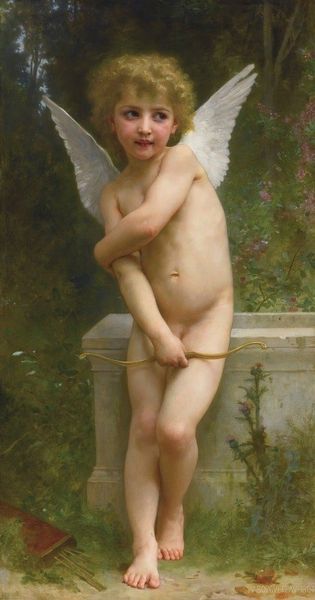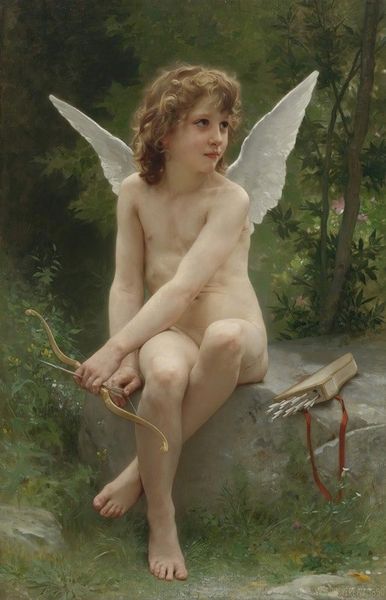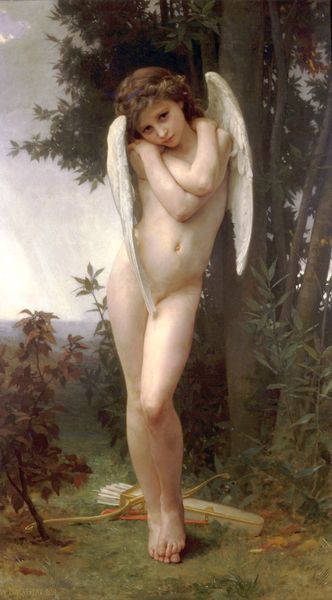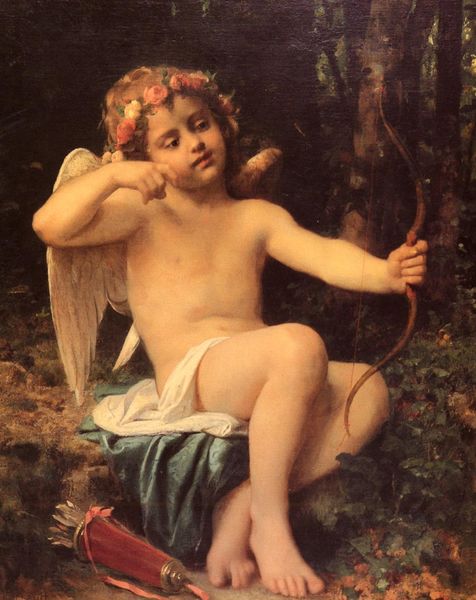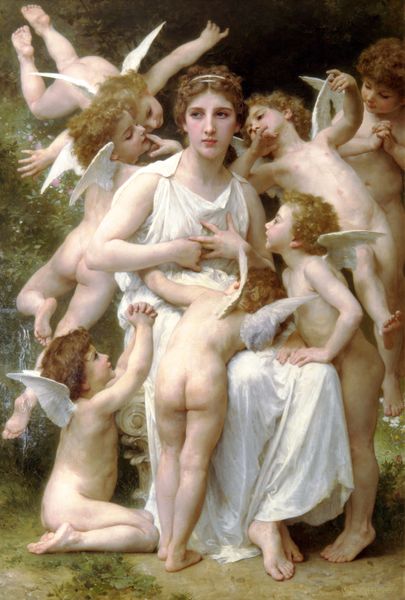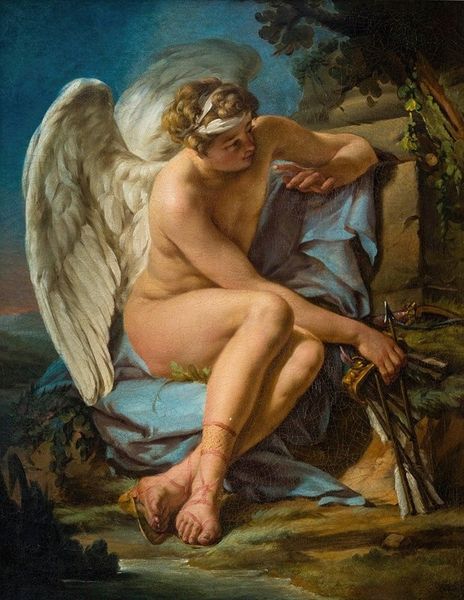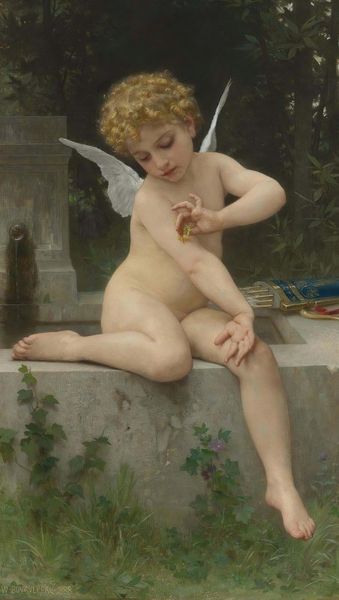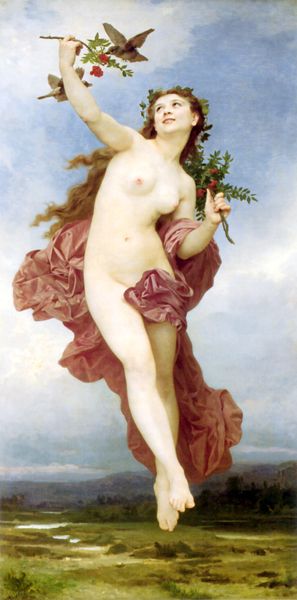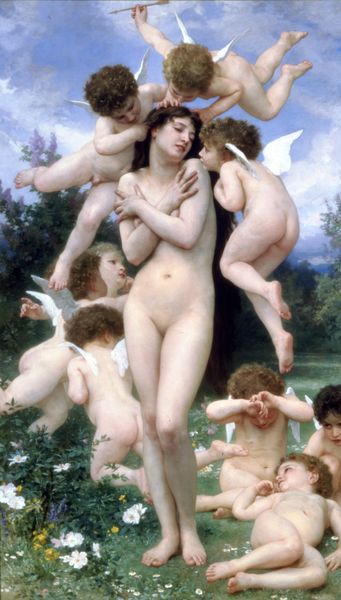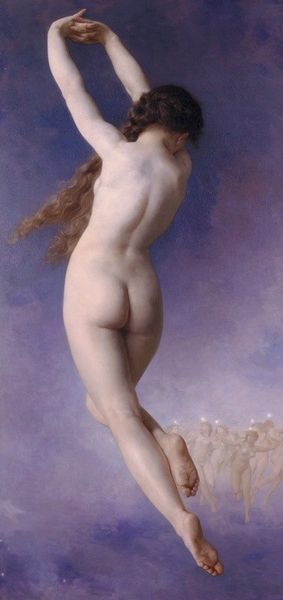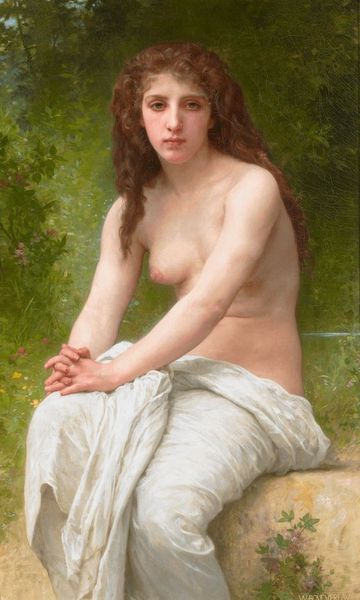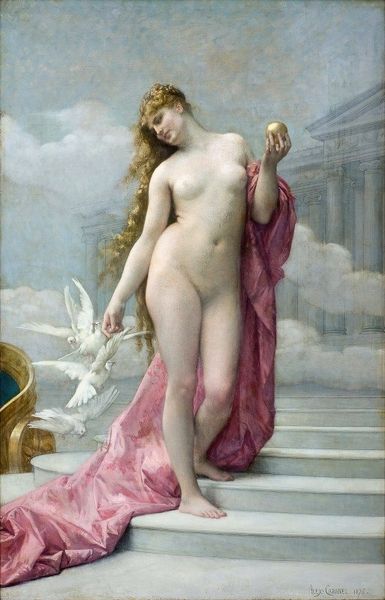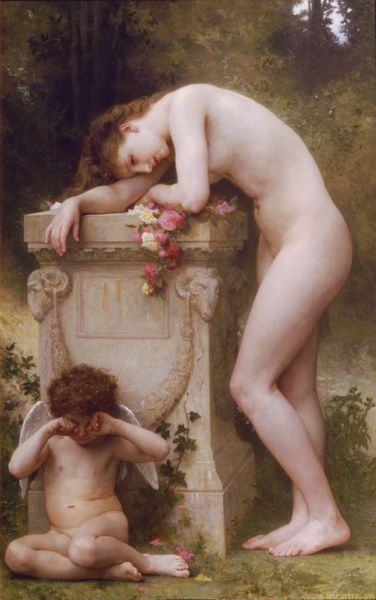
Dimensions: 77.5 x 131 cm
Copyright: Public domain
Curator: Looking at William Bouguereau’s “Love on the Look” from 1891, the overwhelming sense is one of classical idealism, wouldn't you agree? Editor: My first reaction is its disquieting, unsettling even. A winged child, a Cupid I presume, but there is something almost too clinical in the depiction, like a porcelain doll. Curator: Clinical perhaps because Bouguereau was meticulous in his application of oil paint. This piece highlights the incredible degree of craftsmanship involved—layer upon layer to create these flawless surfaces, with no visible brushstrokes. What we are seeing is the pinnacle of the Academic style. Editor: The artist clearly wants us to think about allegories, not workshop conditions. I wonder what narrative Bouguereau tries to construct here, by showcasing this singular representation of a gendered Cupid? Is this Cupid complicit in some power dynamic? His gaze almost implores us to reflect, doesn't it? Curator: Let's also consider that in 1891, the very means of making art were undergoing radical shifts—the advent of readily available tube paints, the rise of impressionism challenging academic strictures. Bouguereau clings to these older modes. What is gained, or indeed, lost, when art embraces industrialisation? Editor: It cannot be coincidental either. Bouguereau’s polished representation of Cupid flies in the face of feminist discourse and a time ripe for political reformation, by reminding us of conventional understandings of power, divinity, and the perceived vulnerability of youth. His cupid exists in an idealized form removed from the social and cultural realities. It's the perfect vision of a gendered stereotype and its inherent role within society. Curator: Interesting how we've moved from pure materiality, to the weight of a socially constructed image. The composition, the medium itself become the battleground. This level of smoothness, of manufactured "perfection," represents the social expectations and roles of gender, race, class—aspects often polished over or entirely erased in conventional depictions. Editor: It reminds us of those often oppressive, even harmful, realities lurking beneath this flawless and classical aesthetic. The longer I look, the more this unsettling perfection becomes almost terrifying in its implications. Curator: I am struck how even something this seemingly straightforward speaks volumes about the choices we make in how we depict and consume images, art, and how the weight of this work rests equally in its social context and the methods of its manufacture.
Comments
No comments
Be the first to comment and join the conversation on the ultimate creative platform.

